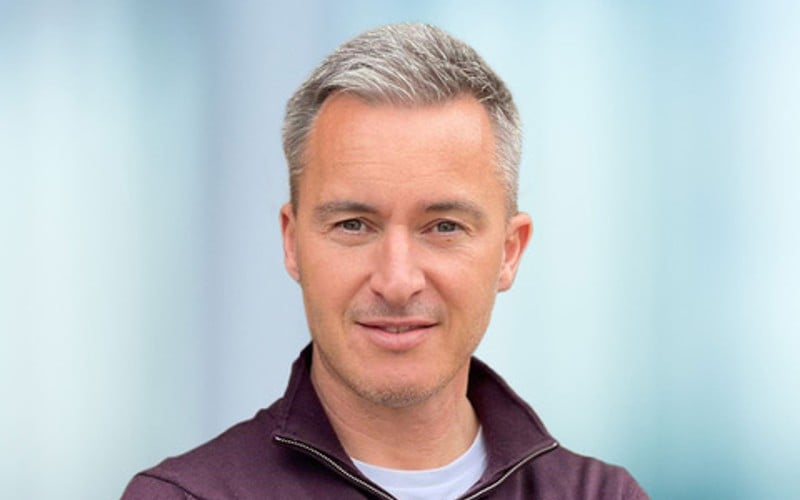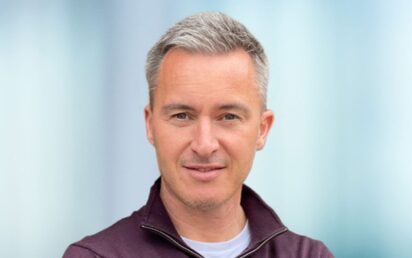Jon Pickering has become very familiar with the study of his home in Kent since being appointed the CEO of workplace data analytics firm Tiger.
The 48-year-old had only been in post at the software company for a month when COVID-19 struck and all the staff – including himself – were forced to work from home.
It meant that Pickering has had to oversee a complete rebrand and major pivot of the business from his study, which is 125 miles away from Tiger’s offices in Ringwood, Hampshire.
Before joining Tiger, Pickering spent 11 successful years as co-founder and CEO of Block Solutions before exiting in 2017.
When he joined Tiger in February 2020, the company was turning over £4.2m and had 48 staff and Pickering divided his working week between his family home in Kent and Tiger’s offices.
Recalling those early days, he says: “I had a few weeks before COVID hit. I was doing around three days in the office.
“I put that four weeks to good effect. I spent a lot of time speaking, listening and understanding the business. That was my first priority so I could put a good strategy in place. I absorbed myself in understanding where the business was at and getting a strategy in place to take it forward.”
When the pandemic struck he immediately opened his diary up so his new staff could book time with him virtually.
“It was a chance to have a chat with them,” he says. “Asking how things are going from a family perspective was just as important as what I was trying to do from a work perspective.
“The thinking at the time was in a few months this will be all be over and we’ll be back at work. I wasn’t too concerned at that point because it was about getting the growth strategy in place but by the back end of the summer we were still in lockdown.
“A big part of the business was building the culture. A new CEO had come in and I wanted people to understand from my mouth what I was trying to achieve and how it would affect them.
“I was trying to build relationships that I’d not had the luxury of doing. That is still my biggest challenge because I’ve not been able to have the impact on the culture that I would have, had the pandemic not happened. It’s the reality for everyone.”
Exit
Prior to joining Tiger, Pickering clocked up more than 20 years working in the telecoms and technology sectors.
He set up Block Solutions in 2006 with Mark Chang before exiting in 2017 after 11 years, by which time it had grown its turnover to over £20m.
“Block are a digital transformation consultation focused predominately on the healthcare market and working with a lot of the major hospitals in the UK,” recalls Pickering.
“We were focused on doing everything to the best of our ability and going above and beyond for the customer. Everything took over from there.”
He’s taken the same philosophy to Tiger, which he describes as a unified communication and collaboration data analytics company.
“My approach is how you take your customers from where they are today and deliver better business outcomes for tomorrow,” he says. “We don’t sell tech, we sell the outcome. It’s not about us, it’s about them.”
The business rebranded from Tiger Communications to just Tiger. “We’re not a communications company, we’re a software company. It was out of kilter as we evolved as a company,” he explains.
The main focus of Pickering’s tenure as chief executive has been creating a growth strategy, the centrepiece being switching from selling contracts to a SaaS-based product.
Changes
The first part of developing the growth strategy was making changes to the commercial team.
“It was about building a new sales capability,” he says. “The sales team was made up of account managers. Predominately our business transacts through channel partners. We were very much about account managing our channel partners, not driving end-user opportunity.
“The biggest change that I made to the sales team was introducing a business development role which was effectively bringing people in who could drive new partnerships.
“If you want to scale the company you need to start building the pipeline quicker than you have before.”
Tiger has recruited three BDMs while the account managers concentrate on converting their 400-strong customer base to a SaaS model.
Pickering has also overseen a major rebrand which has included bringing in a marketing function.
“Tiger had never done any marketing before so it was a big change and we’ve made huge progress in that space,” he says. “We’ve got PR, regular media outreach and a great website.”
The third element of the growth strategy focused on the technical side of the business.
“We had to make sure we were evaluating how we were developing software so we could bring in more functionality and features in our software on a more regular basis,” he explains.
SaaS strategy
The next part of the growth strategy related to people and culture with the biggest element being the pivot to a SaaS-based model.
“The pivot came when we started to think about how we were going to drive value in the business,” he explains. “We decided to move from the legacy approach of selling a one-off licence to a customer and a small maintenance wrap around it and started providing the subscription contracts that will drive the MMR up.”
During the pandemic Pickering has written about the challenges of working from home during the pandemic.
“I’m not the type of CEO who operates autocratically,” he says. “I like to think I’ve got an open door, even a virtual open door. I speak to all the sales team on a regular basis. It’s about making yourself available and approachable. People can contact me.
“Personally I found it a bigger challenge this year rather than last year. As we got into 2021 and we were still in lockdown I would be lying if I said I found it amazing to be sitting in my study running a company when I like to meet people, customers and partners.”
The keen sportsman has completed many triathlons and has a love of golf, football and rugby league. “I’ve made some adaptions as to how my day goes. I try and exercise in the morning if I can. I go for a walk with the dog at lunchtime and listen to a podcast. I try and do something afterwards to keep my body moving because you’re not walking to the Tube or walking to the train station like we used to.
“I don’t see myself as some type of superhuman. It’s not been easy for anyone.
“When we start to get teams populating the office again I’m going to enjoy it a lot more and I think everyone will enjoy it a lot more.”

